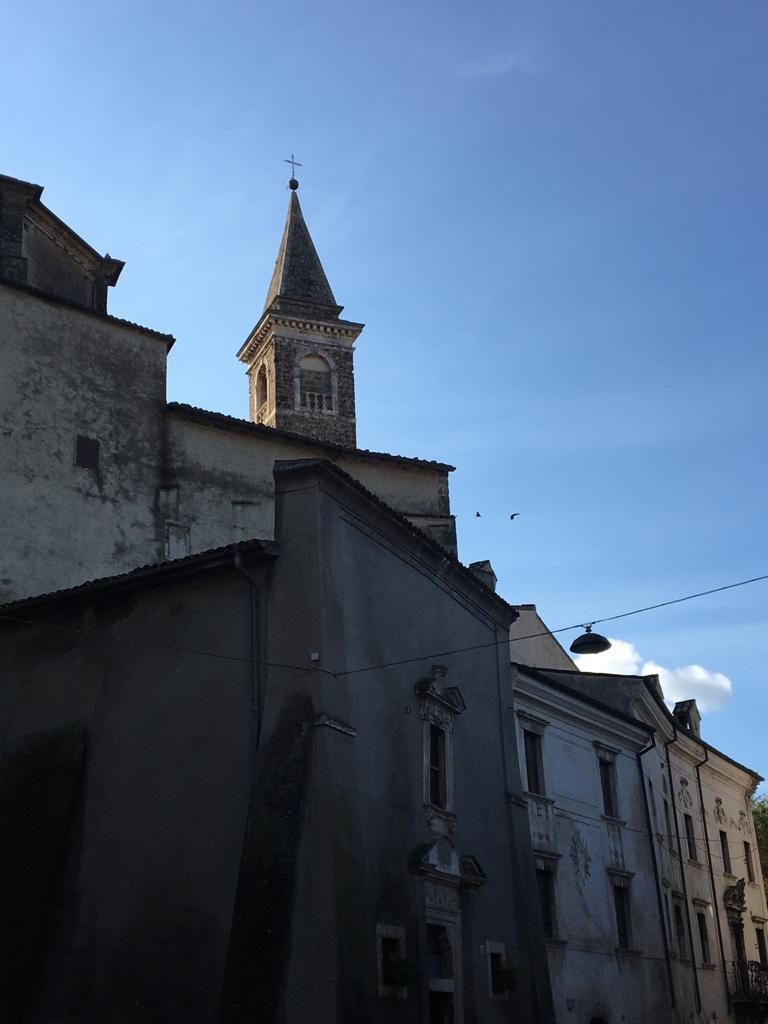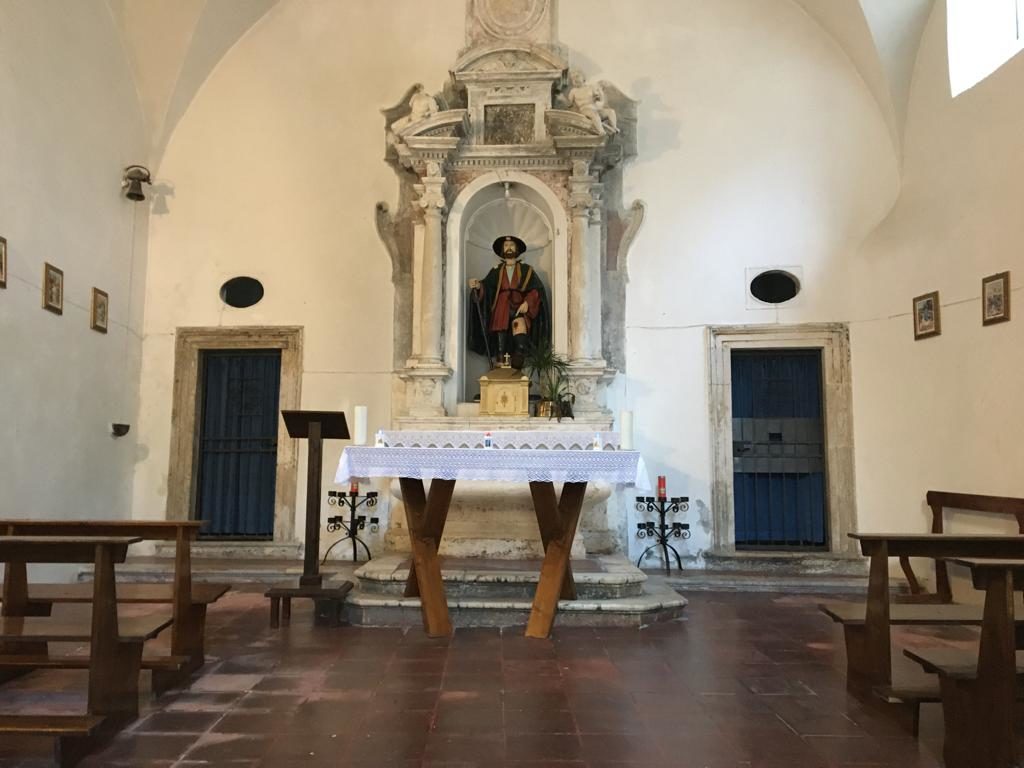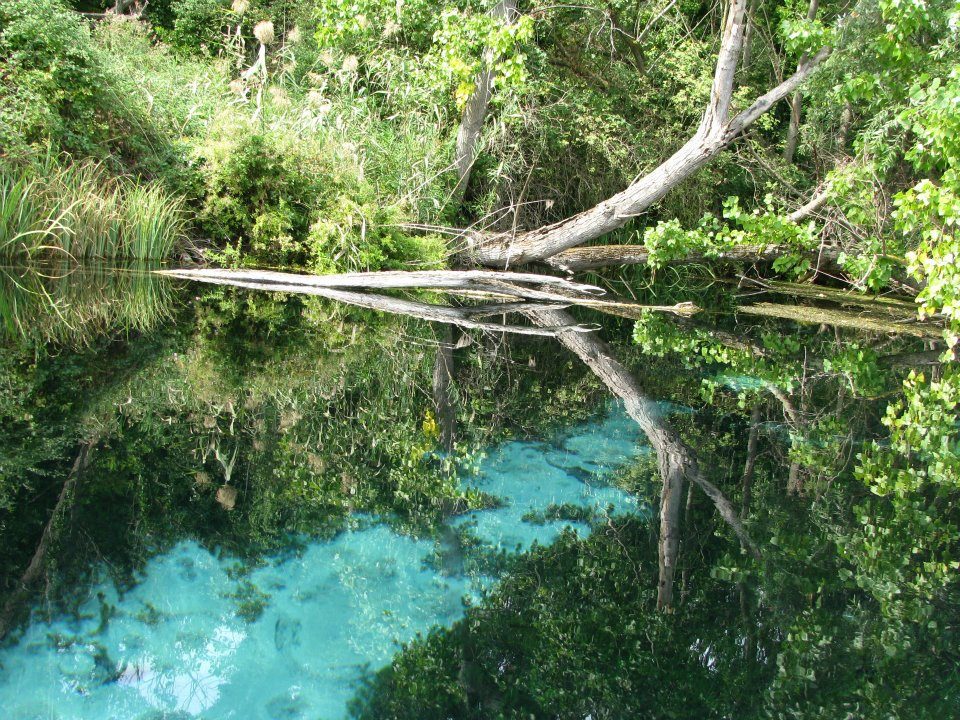🇬🇧 The churches of Popoli
Church of St. Francis: preceded by a high staircase with two Romanesque lions, it has a Romanesque stone block style. The first building and the adjoining convent already existed in 1334. The church was later restored several times: the lower part in 1480 and the upper part in 1689. The portal is remarkable, consisting of six columns with crocheted capitals and embellished with floral motifs, with a central quatrefoiled rose window with symbols of the evangelists. On either side of the rose window stand two statues, St. Francis and St. Anthony of Padua. The upper part is Baroque in style, embellished with statues of saints and surmounted in the centre by St. George piercing the dragon. The interior houses the beautiful antependium (Chapel of St. Francis, first half of the 18th century) by Raimondo Pompei, as well as a wooden crucifixion and triptych, and a fresco both depicting a deposition, and the 17th-century painting of the Crowned Virgin.
Church of St. Rocco: it was built next to the homonymous gateway to the city, which was demolished in the 19th century. The palace attached to the church is a fine example of aristocratic building from the early 18th century.

St. Rocco church and Muzii palace with the Holy Trinity bell tower in the background 
St. Rocco altar
Church of St. Lawrence: its layout dates back to 1562. Worthy of note are a stoup, a baptismal font and the high altar by Mancini (1745), the 18th century wooden choir and the paintings of the Madonna and Child and the Madonna of Constantinople.
Church of Our Lady of Grace: place of worship of the poor, it was built in the late 1500s on the outer fringes of the city with their contribution. Adjacent is the church of St. Dominic.
Church of St. Dominic: The Dominicans settled in Popoli in 1715 at the behest of the priest Don Donato Bozzelli. The building was enlarged and turned into a small convent. The church is located below the street level on which it overlooks; therefore, it is by means of a scenic staircase that one descends to the level of the single nave with chapels, a short transept and a dome set in a tiburium. In 1854, the entrance door had to be raised and the interior staircase renovated; this work also provided an opportunity to modernise the façade.
Church of the Holy Trinity: Between 1716 and 1734, the Church of the Holy Trinity, which had existed at least since before 1587, was rebuilt. At the top of a flight of steps, the building has an austere façade marked vertically by pillars and counter-pillars in the Tuscan order, placed on high pedestals to frame three portals and concluded, above an entablature standing out from the pillars, by a central triangular pediment. The high altar is a marble work made in 1750 while the two altars date back to a later period. The mention of the sculptural decoration of the façade of the Holy Trinity refers to a craft tradition in Popoli that had been alive for centuries: a certain Antonio Sonsini ‘Milanese plasterer’ is mentioned. Someone called Domenico Sonsini, a century later, is paid for some work on the exterior of the church organ. Finally we know that another Sonsini, from Popoli, named Giovan Carlo, is the author of the reconstruction of the church of Sant’Eustachio in Tocco da Casauria, completed in 1749.
Source: Popoli città d’arte e natura
Authors: Roberto Flauto, Federico Palmerini, Andrea De Melis
Project: work-school with the “Amedeo di Savoia” high school (Popoli)
Tour of the churches of Popoli
Made by the volunteers of the Popoli Civil Service


